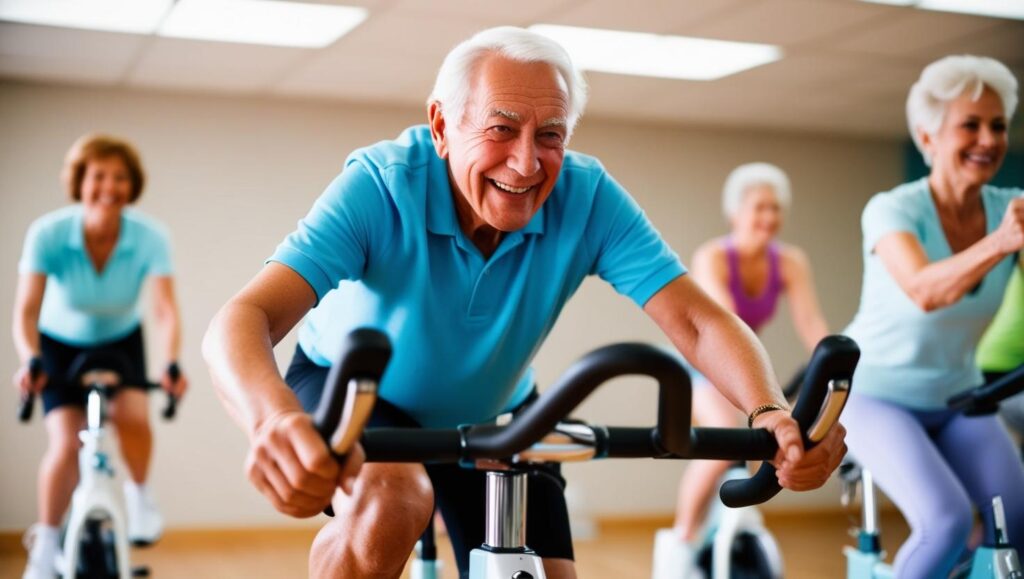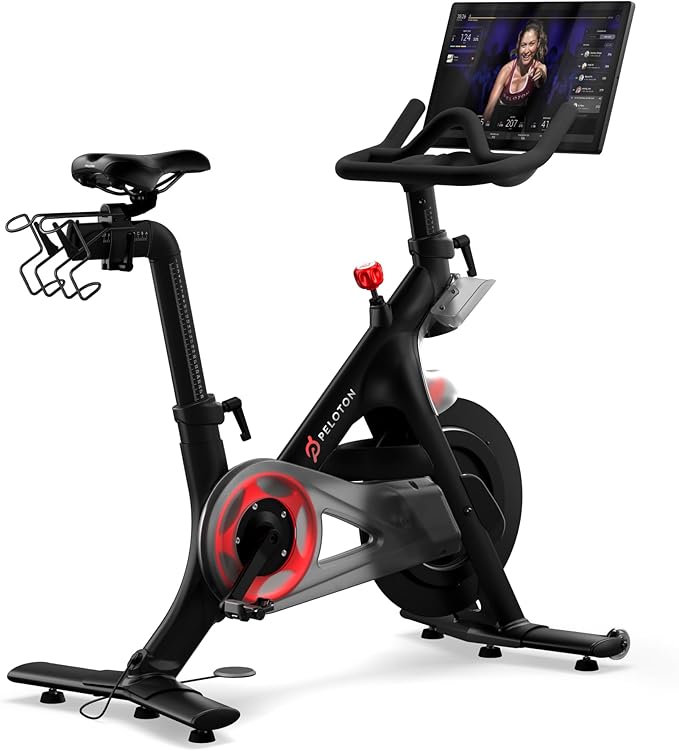Indoor Cycling for Seniors: A Comprehensive Guide to Safe and Effective Spinning
Staying active is essential at any age, but for seniors, finding an exercise routine that balances effectiveness and safety can be challenging. Enter indoor cycling, a low-impact, heart-friendly workout that’s easy on the joints and can be tailored to individual fitness levels. Whether you’re looking to improve cardiovascular health, maintain mobility, or simply stay active in the comfort of your home, indoor cycling offers a fantastic solution. Let’s dive into the steps, tips, and strategies to make indoor cycling a rewarding and safe experience for seniors.
1. Why Indoor Cycling is Perfect for Seniors
Indoor cycling brings together convenience, safety, and adaptability, making it an excellent choice for seniors. Unlike high-impact exercises like running, cycling provides a full-body workout while minimizing strain on joints and bones.
Benefits of Indoor Cycling for Seniors:
- Low-Impact Exercise: Perfect for those with arthritis or joint pain, cycling reduces the risk of injury.
- Controlled Environment: No worries about weather, uneven terrain, or traffic—your workout is safe and predictable.
- Customizable Intensity: Whether you want a leisurely ride or a vigorous session, you can adjust resistance and speed to suit your comfort.
- Improved Cardiovascular Health: Regular cycling strengthens the heart, improves circulation, and helps regulate blood pressure.
- Enhanced Mobility: Cycling keeps your legs moving and muscles engaged, promoting flexibility and reducing stiffness.
Example: Mary, a 68-year-old retiree with knee arthritis, started cycling for 15 minutes daily. Within weeks, she noticed reduced joint pain and improved stamina—all without leaving her living room.

2. Getting Started: Setting Up for Success
Before jumping on the bike, it’s essential to prepare your space and equipment to ensure safety and comfort.
Steps to Begin Indoor Cycling:
- Choose the Right Bike: Opt for a stationary or recumbent bike. Recumbent bikes are especially great for seniors, offering a supportive seat and reduced back strain.
- Adjust the Bike: Set the seat height so your legs have a slight bend at the bottom of the pedal stroke. The handlebars should allow you to maintain an upright and relaxed posture.
- Prepare Your Space: Place your bike in a well-lit, ventilated area. Keep water, a towel, and a sturdy chair nearby for added support if needed.
- Wear the Right Gear: Comfortable, breathable clothing and proper footwear with a good grip are essential. Padded cycling shorts or a gel seat cover can improve comfort during longer rides.
- Check Your Form: Sit with your back straight, shoulders relaxed, and hands resting lightly on the handlebars. Avoid locking your knees as you pedal.
- Start Small: Begin with short sessions (10–15 minutes) at low resistance and gradually increase duration and intensity.
Example: John, 72, invested in a recumbent bike and started with a simple 10-minute daily routine. Over time, he extended his sessions to 30 minutes, incorporating light resistance for added strength training.
3. Safety Tips for Senior Spinners
Safety is a top priority when it comes to exercise for seniors. With a few precautions, indoor cycling can be a safe and enjoyable experience.

Essential Safety Tips:
- Warm-Up and Cool Down: Begin with 3–5 minutes of light pedaling to prepare your muscles and end with stretches to prevent stiffness.
- Stay Hydrated: Keep a water bottle handy and sip regularly to stay hydrated during your workout.
- Monitor Your Heart Rate: Use a fitness tracker or pulse monitor to ensure you’re within a safe range for your age and fitness level.
- Take Breaks: Don’t push yourself too hard. Listen to your body and take short breaks if you feel tired or dizzy.
- Secure Your Feet: Use pedal straps or cycling shoes to keep your feet in place and avoid slips.
- Consult Your Doctor: Always get medical clearance before starting a new exercise routine, especially if you have pre-existing conditions.
Example: Helen, who has a history of high blood pressure, wears a heart rate monitor during her cycling sessions. This allows her to maintain a safe intensity level while enjoying her workout.
4. Crafting a Senior-Friendly Cycling Routine
A well-rounded indoor cycling routine includes more than just pedaling. Incorporate elements that promote cardiovascular health, strength, and flexibility for a holistic approach.
A Sample Cycling Routine:
- Warm-Up (5 Minutes): Start with slow, steady pedaling at low resistance.
- Cardio Session (15–20 Minutes): Increase resistance slightly for a moderate intensity. Alternate between steady pedaling and short bursts of faster cycling.
- Strength Intervals (5 Minutes): Add resistance and pedal at a slower pace to build leg strength.
- Cool Down (5 Minutes): Gradually reduce resistance and speed to allow your heart rate to return to normal.
- Post-Workout Stretching (5 Minutes): Focus on your legs, hips, and lower back to enhance flexibility and prevent stiffness.
Tips for Consistency:
- Set Goals: Aim for 3–5 sessions per week. Track your progress to stay motivated.
- Incorporate Variety: Add light hand weights or resistance bands for upper body exercises while cycling.
- Make It Fun: Listen to music, watch TV, or join a virtual cycling class to keep things engaging.
Example: Sarah combines her 20-minute cycling sessions with light stretching and mindfulness exercises, turning her routine into a relaxing yet effective workout.
5. Comparing Indoor Cycling with Other Exercises
While indoor cycling has unique advantages, it’s helpful to understand how it stacks up against other forms of exercise for seniors.
Stationary Bike vs. Treadmill:
- Impact: Cycling is gentler on joints compared to walking or jogging on a treadmill.
- Balance: A stationary bike eliminates the risk of falls, making it a safer option.
- Versatility: Treadmills mimic natural walking but lack the targeted lower-body strengthening of cycling.
Stationary Bike vs. Elliptical:
- Ease of Use: Cycling is simpler and requires less coordination than an elliptical.
- Muscle Focus: Bikes primarily target the lower body, while ellipticals engage both upper and lower body.
Indoor Exercise Bikes
Conclusion: For seniors with joint pain or balance concerns, indoor cycling offers a safer and more comfortable alternative to treadmills and ellipticals.
Conclusion: Ride Towards Health with Indoor Cycling
Indoor cycling is a fantastic way for seniors to stay active, improve cardiovascular health, and maintain mobility—all from the comfort of home. Its low-impact nature makes it a safe and accessible choice for older adults looking to boost fitness without straining their joints.
By starting slow, prioritizing safety, and crafting a well-rounded routine, you can enjoy the numerous benefits of indoor cycling while minimizing risks. Whether you’re pedaling to your favorite playlist or participating in an online class, indoor cycling offers a customizable and enjoyable workout that fits seamlessly into your lifestyle.
So, why not hop on the bike and give it a spin? With consistency and care, indoor cycling can become a cornerstone of your health and wellness journey, keeping you strong, active, and energized for years to come.



